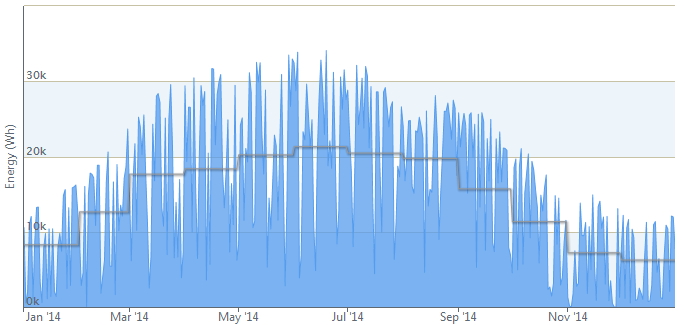
At this time of year I occasionally notice vehicles left idling in parking lots, sometimes they are completely unattended. While this practice has been common in the winter in northern states for a long time, it is a really bad idea for a lot of reasons. From a sustainability standpoint reducing wasted gasoline and CO2 emissions is a no-brainer. Leaving vehicles idling is an old habit that is irrelevant to modern engines that do not need to be kept warm. By one estimate nearly 2% of the nations CO2 emissions come from vehicles that are not moving. According to a study by the Argonne National Laboratory in 2009 drivers actually averaged 16 minutes a day of idling.
An idling vehicle emits 20 times more pollution than when it is moving at 30 mph. These emissions are particularly problematic for children who are more sensitive to air pollution since their defense mechanisms are not yet fully developed. This is why many school zones have declared their parking areas "No Idling Zones". Here in Maine temperatures remain below freezing on average for most of the winter, here is a chart from my weather station spanning February 2013 through April 2014:

While it is understandable to want to warm up a vehicle for a minute or so before you get in it, the vehicle itself does not require it. When an engine idles it is not running at its optimum operating temperature
and condition, resulting in incomplete combustion of gasoline
that can leave fuel residues in the engine which can shorten its life. Modern fuel injection vehicles can and should be driven after only warming up for a few seconds since that warms up the catalytic converter and other parts of the car more rapidly. Here is a helpful reference about vehicle idling and the issues surrounding it.
With the advent of hybrid vehicles, needless idling is being reduced because almost all hybrid vehicles shut off their gasoline engines when they are at a standstill. Vehicle manufacturers are also developing auto stop features for regular gasoline engines, and many vehicles in Europe now have that feature. My wife and I have owned hybrid vehicles since 2001 and are very familiar with engines that automatically stop when the vehicle stops, although people new to this feature find it disconcerting at first. The engine restarts instantly when you put it in gear or move your foot down on the accelerator. This is one of the schemes that hybrid vehicles use to reduce their carbon emissions and obtain low emission ratings.
My 2012 Chevy Volt has a remote start feature that allows me to warm up the vehicle for 10 minutes from over 100 feet away by clicking the keyfob. This wonderfully convenient feature allows me to step into a warm vehicle in the dead of winter. Since I leave the vehicle plugged in, it will use energy from the (240V Level II) charging station to warm the battery unless it is below 20°F in which case it will run the four-cylinder 1.4 L engine/generator for a while in order to generate enough waste heat to warm up the battery to a safe level. Electric vehicle batteries can be damaged if they draw power when they are below freezing, so the vehicle needs to protect itself in this instance. Sometimes in very cold weather if I am driving in fully electric mode, the engine will start and show a display on the dashboard that says: "Engine running due to temperature". GM engineers considered this an optimal trade-off to protect the very expensive battery bank.
You may believe that turning a car on and off repeatedly wears out the battery and wears
out the starter, but it's not true. Today, nearly every passenger
vehicle
engine uses electronic ignition so you do not need to crank the engine for multiple seconds to start it like the old carburetor engines. You may not have noticed it but modern vehicles very rarely need to be jump started and keeping jumper cables in the trunk is a thing of the past.
To quote from the above-mentioned reference:
The city of Aspen, Colorado, launched a program called
Idling
Isn’t
Cool, which targets people who let their cars idle to warm them up
in cold weather or while running errands. Environmental health specialists
walk through town and place small, laminated placards featuring an
image of the earth sweating from heat on windshields of offenders.
The placard reads, “
Turning off your engine when you are not
driving is one of the easiest things you can do to lessen your contribution
to global warming.” It goes on to explain that 30 seconds of
idling is ample time to get engine oil circulating. It also cites
the city ordinance that makes it illegal to idle an engine for 5
minutes or more and provides a link to calculate personal carbon
emissions,
www.aspenglobalwarming.com/calculate.cfm.
Not idling your vehicle is a simple behavior change similar to turning lights off when you leave a room. Both things will save you money and improve the quality of life on planet Earth for future generations.






.JPG)


















.jpg)








